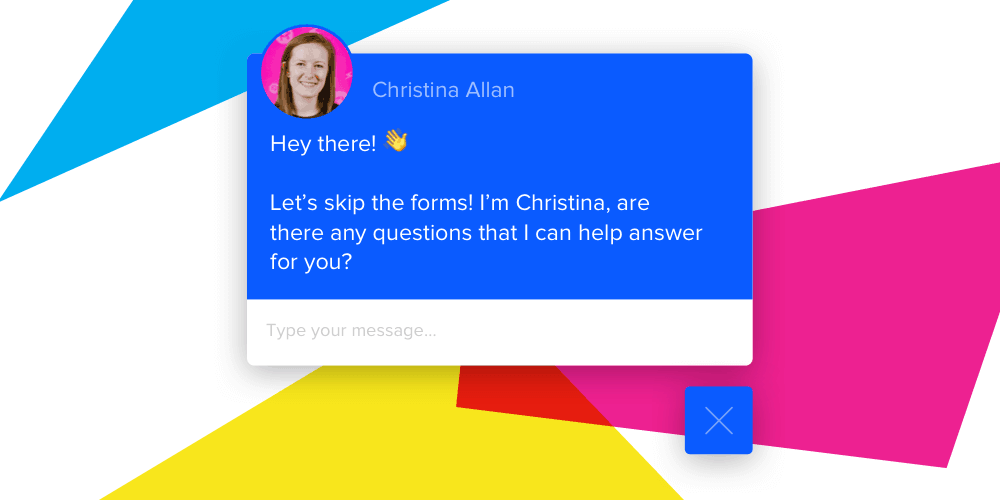
Editor’s Note: The following is a guest post. Interested in contributing content to the Drift blog? Email Molly Sloan at msloan@drift.com.
Stop and assess. Ask yourself three questions:
- If one were to land on your website, intending to purchase or evaluate your product, how hard have you made that for them?
- What’s your top priority as a sales/marketing leader: driving revenue and ensuring your customers are wildly successful, or collecting their contact information?
- Have you optimized your digital presence for lead generation over revenue generation?
For entirely too long, gated content has been the go-to lead generation strategy of entirely too many marketings team.
For marketers who’ve long relied on gating content, a confluence of forces is transpiring to disrupt their old approach.
Buyers are becoming more savvy. Third-party information about your platform is easier than ever to come across. Creating consensus in a sales cycle, across a buying team, is all the more critical. Distrust of salespeople is increasingly prevalent.
So in the face of all these forces, the idea of creating additional barriers for buyers to clear – buyers who need to complete a distinct set of tasks in order to procure your product – is completely counterintuitive.
“Gorbachev, tear down the form fill-outs.”
Gated content represents a real barrier for those looking to complete the distinct set of tasks they need in order to procure your product.
When someone lands on your website, odds are, according to Gartner, they’re trying to either identify the right problem to solve, explore viable solutions to alleviate their specific, pain, build requirements as a part of their procurement process, or select the right vendor (tasks Gartner has identified as the distinct set of “B2B buying jobs”).
Your goal as a sales or marketing leader, if you truly believe in creating a “buyer centric” buying process, should be to make it as easy as possible for a buyer to complete that set of tasks.
The idea of gating your content flies in the face of creating a “buyer centric” experience.
Let me be clear – there’s a purpose and a place for gated content. Gated content still makes sense for offers where there’s real, tangible value (getting a hard copy of a book, for instance, or access to a VIP event). That said, the purpose of creating content should be to help prospects move through the buying journey. Creating unnecessary hurdles to clear for low-quality content is to the detriment to helping buyers achieve that goal.
Worse yet, if you can’t help your prospects complete the buying journey, and you focus instead on gating content, and farming leads – odds are, your competitors are more than willing to open up their marketing collateral to allow your buyers to solve their problems and complete their buying jobs.
Much as the complexity of B2B buying has continued to increase, so too has the number of viable solutions for a buyer to explore. All the vendor-created barriers to gathering information has created an epidemic, amongst potential customers, of form fatigue.
As that epidemic spreads, ungated content will, increasingly, reign supreme. The companies that are most willing to unlock their content will likely win.
eCommerce platforms have reprogrammed buyers
If you’re anything like me, you buy almost everything these days on Amazon.
I’ve shifted how I purchase products because there’s a single site where I can buy what I want, with a single swipe, and all my information is already in the system.
Every B2C, eCommerce site looking to lure me away from Amazon’s platform has to compete, not just with a potentially wider variety of options, but also with an incredibly low barrier to both understanding my options, rapidly making a purchase decision, and purchasing a product.
The modern buyer, who, like myself, has had their buying habits reprogrammed by sites like Amazon, no longer has the patience for gated content. Nor do I want to speak with a sales person.
I only purchase products three ways – and both are relevant to B2B sales/marketing orgs that are looking to adjust to a new buying environment:
- I know I want to buy something, and I read online reviews to figure out what’s best, (whether on Amazon as a consumer, or, G2 Crowd, as a buyer).
- I talk to people in my network in order to suss out what vendors I should be considering – because I inherently trust those in my network.
- Or I see them with something that I want and ask them where they got it and what they think about it.
Gated content doesn’t fit in a world where modern B2B buyers are facing a confluence of new forces, and B2C buying has reprogrammed them.
Riding the new wave
To catch up with buyers, marketers need to develop a more “human” approach.
Strategies like conversational marketing, better enablement and training for sales teams, and fostering in-person community in order to create opportunities for your customers to sell to your prospects/future customers (call it “Customer to Customer,” or “C2C” marketing) – all allow the modern marketer to react to the shift in B2B buying behavior.
As the VP Head of Sales for Bevy, I’m right in the thick of helping brands create more opportunities to foster human to human, face-to-face connections with their customers. We’re helping best in-industry communities at companies like Atlassian, Slack, Duolingo, and MuleSoft grow and scale their in-person communities, and drive tangible business impact.
Prior to working at Bevy, I actually had the pleasure of working at MuleSoft – a Salesforce company. At both MuleSoft, and Salesforce, in-person events were the number one source of revenue – not gated content.
How did we get here?
Gated content is largely a response to the fact that B2B buyers spend the lion’s share of their time in a buying process (27% according to Gartner) doing online research, compared to only 17% of their time talking to salespeople.
Gated content was the solution marketers came up with to capture interested buyers who increasingly have grown less and less inclined to meet directly with sales.
The focus on capturing leads has also narrowed the focus of marketers on vanity metrics. SLAs on metrics that measure quantity over quality – metrics like “new leads created” – encourage proliferating a high volume of low quality leads.
Gated content creates the same kind of crummy feeling you get when you walk into Nordstrom intending to buy some socks (and really don’t need help picking a pair of socks), but a salesperson still insists on following you around, asking for your name.
By creating a default path that forces buyers to submit contact info and talk to a sales rep, marketers who gate their content have created avoidance-oriented behaviors. People avoid going to sites where forms are a must.
They want answers, and they want them rapidly.
Buyers who grew up Googling have a short attention span, and often limited time to complete their buying research or their specific buying “jobs.” So if you don’t allow them to get the answers they need on your site, without gating them, they’re likely going to go elsewhere.
The gated content approach is also a big part of the ubiquitous conflict between sales and marketing.
Sales demands more leads, and marketing responds by following the path of least resistance – creating more low quality leads.
Unfortunately, generating a greater number of low-quality leads just exacerbates the conflict. Low quality leads impact pipeline conversion rates, and the end result is often a tiger team of sales and marketing leaders, huddled in a room, trying to get to the root of that conversion rate fall off.
Alas, there’s hope
The good news – there are ways to maximize opportunities to engage prospects who visit your website, while simultaneously decreasing the volume of low quality leads.
Conversational marketing is a great way to effectively guide someone who doesn’t know what they need through the buying journey.
Using a chatbot can give you the ability to help people on your digital property navigate your site. You can point them to the right content that helps them complete the specific buying jobs they have.
You can set these chatbots up to triage out unqualified prospects, (through a series of qualification questions). Guiding unqualified prospects to nurture tracks or high quality content that keeps them engaged (until they’re further along in their buying process).
Then, when they’re ready and at an appropriate place in their buying journey, and they come back to your site, use chatbots to triage them back into your sales pipeline.
The end result when both salespeople and marketers are excited about how highly-qualified leads are: a reduction in friction, a boost in morale – and the kind of pipeline that would make even Super Mario smile.






